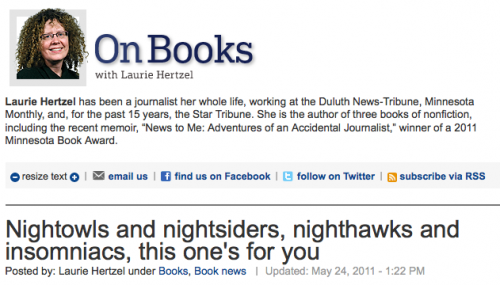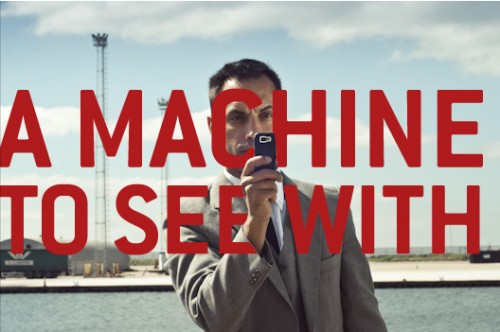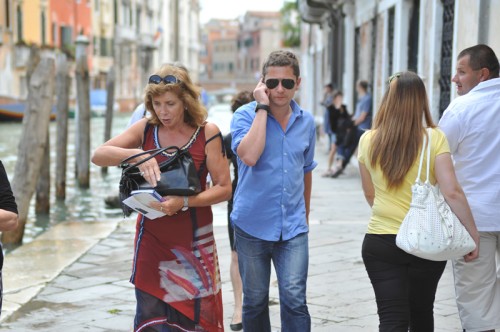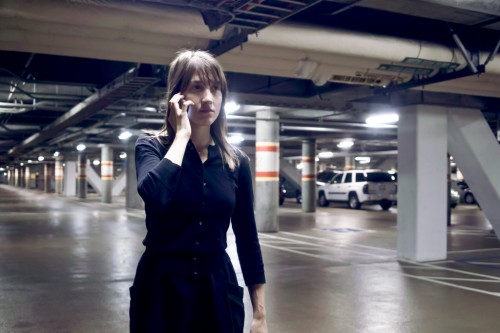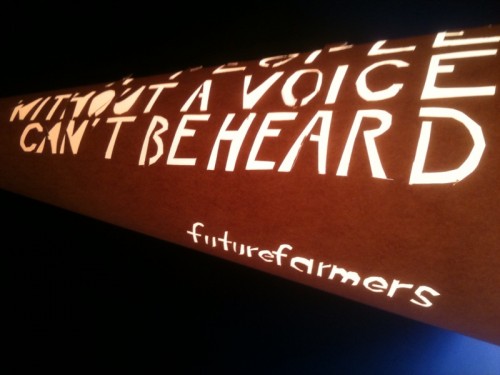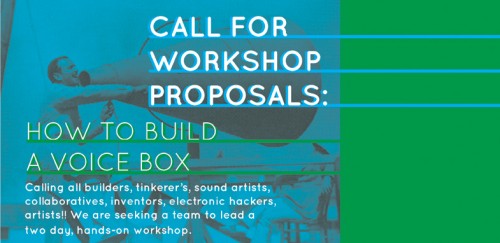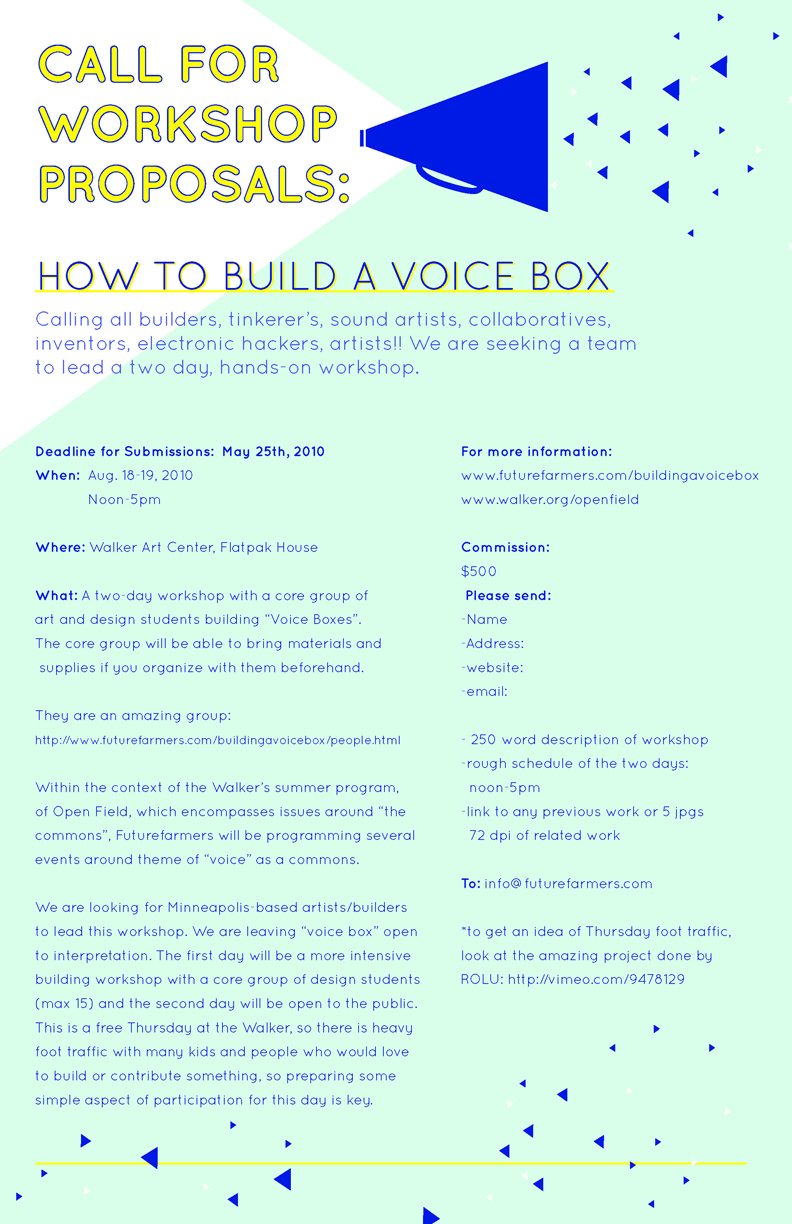
Futurefarmers, A People without a Voice Cannot Be Heard, co-presented by Northern Lights.mn and Walker Art Center, August 2010
Futurefarmers’ A People without a Voice Cannot Be Heard is part of the Walker’s summer “Open Field” programming about the cultural commons.
Three Futurefarmers (Amy Franceschini, Michael Swaine, and Dan Allende, a new farmer who worked as an intern on the Reverse Ark project in Baltimore) came to Minneapolis to prep for their summer project A People Without a Voice Cannot Be Heard, which is being co-curated and co-presented by Northern Lights.mn and the Walker Art Center. Northern Lights artistic director Steve Dietz sat down with Amy and Michael to discuss their upcoming project after three days of meetings with Walker staff, local artists, and potential community collaborators.
Steve Dietz – Amy and Michael, on your website (http://futurefarmers.com/), you write “Futurefarmers is a group of practitioners aligned through an open practice of making work that is relevant to the time and space surrounding us.” What do you mean by that?
Futurefarmers – (laugh) Futurefarmers was founded in 1995, and at first we had a design studio that we worked out of, but really our primary interest is in creating platforms for sociability. At some point, we stopped paying rent on the studio and began working on a project basis with a dynamic group of collaborators creating mostly temporary work particular to a specific site or situation. For example, A People Without a Voice Cannot Be Heard, is our response to the Walker’s summer theme of the cultural commons. For the month of August, we, along with a core group of local collaborators will explore together the idea of voice through workshops, lectures, outings, film programs, and public events.
SD – Curiosity seems to be a primary motivation and exploration a key component of Futurefarmer’s “m o,” as with projects like Reverse Ark at the Baltimore Contemporary Art Museum or the Free Soil Bus Tour at the 01SJ Biennial in San Jose.
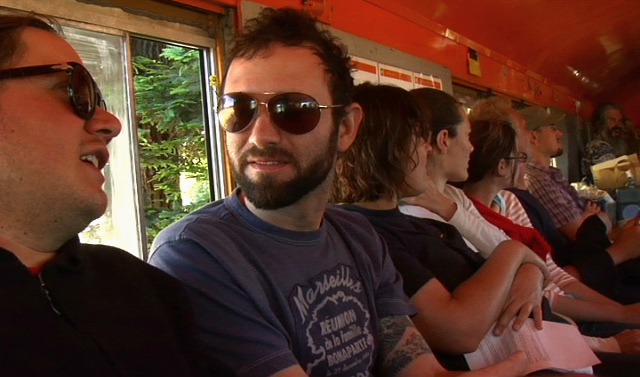
Futurefarmers, Free Soil Bus Tour 2, 01SJ Biennial, 2008
FF – Yes, we often start with a topic that we’re interested in such as sustainability or radical education, and our project methodology is to search out experts and people with hands on experience and to explore the topic from a range of perspectives over a period of time with a core group of collaborators. We don’t know precisely what the end will be when we begin, but we are makers, and it always involves making something along with studying film and literature and lots and lots of informal conversation.
SD – For Open Field at the Walker you are exploring the topic of voice. What prompted that?
FF – Our normal practice is not to respond to specific themes, but we’re interested in working in interesting situations and the opportunity to work with the Walker and Northern Lights in the context of the Open Field initiative was very exciting. We first thought about voice because we’d heard that singing reduces stress, which seemed like a good thing, even though neither of us has a music background nor can be described as a singer. In relation to the commons, however, if you think about singer-songwriters like Woody Guthrie or Chuck D of Public Enemy, there is an obvious connection, and we like working in new territory, so to speak. We then visited a local girls’ choir rehearsal on our first visit to the Twin Cities, and their common voice had an almost physical presence, which was very inspiring on many levels. We hope they can be involved in a kind of choral derive of the city during our residency. We’ll also explore other ideas about and uses of the voice from Inuit throat singing to auctioneers to a film about song metering prison labor to the printing press and megaphones as amplifiers of the people’s voice.
SD – “This field is your field.”
FF – Sort of. We’re very interested in the relation of the institution to the general public, and the open field next to the Walker is perfect as both a literal and metaphorical site for exchange. At one point we thought of creating a kind of Trojan Horse, which would cache people’s unheard ideas and voice them into sites of authority, whether the museum or city hall. In a sense, what is left of that initial idea is just the voice box. How can we construct multiple ways for people’s voices to be heard in a common space? Of course, we don’t know the answer at this point, but we’re interested in a story from Jonathan Swift’s Gulliver’s Travels, where he asks the question what would it be like if people could only speak through and with objects. On the first Saturday in September, we will invite people to bring a blanket and their objects to the Walker’s open field, and we’ll see what happens. Maybe there will be an auction, maybe there won’t, but we like the idea of the field being dotted with hundreds of blankets, each of which has a story to tell.
SD – How can people get involved in A People without a Voice Cannot Be Heard?

Futurefarmers, workshops for A People without a Voice Cannot Be Heard
FF – Lots of ways. We will be collaborating with a group of local artists on the project, and the FlatPak house in the Minneapolis Sculpture Garden will be our headquarters. The public is welcome to stop by anytime. We will be programming workshops, lectures, film screenings, walks and other happenings throughout the month of August, particularly on Thursday evenings. Many of these events are open to the public. They are all listed at http://www.futurefarmers.com/buildingavoicebox/schedule.html for more information.
SD – Thanks Amy and Michael. I can’t wait to hear – and see – your voices at work this summer.
